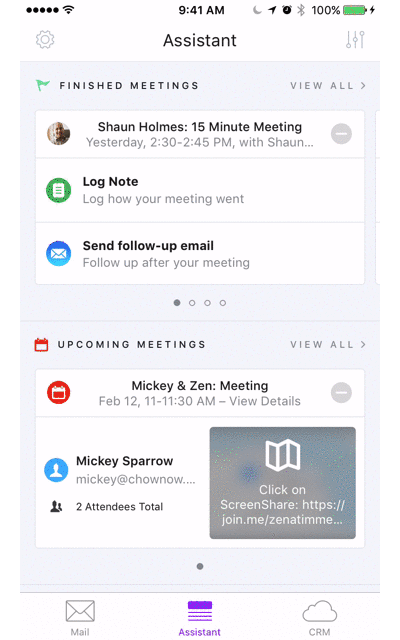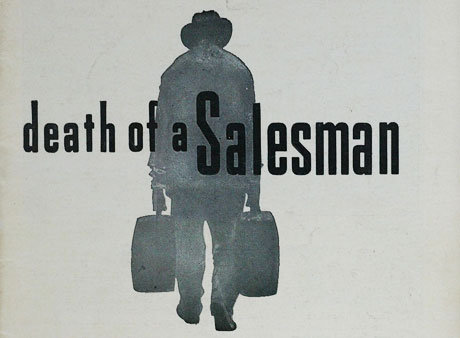
The Twenty Minute VC with Branko Cerny, Founder & CEO @ Immediately
Last week I sat down withBranko Cerny, the CEO atImmediately and one of the youngest founders in the enterprise space. Immediately is a mobile platform for modern sales professionals with the mission to elevate sales back to it’s core foundation, a relationship driven craft. Immediately has an all-star list of backers, including Laurel Touby,Naval Ravikant, Ryan Holmes, Jonathan Abrams, and Kate Shillo. The following are some of our favorite parts of the interview, but you can list to the full podcast by clicking here.
Cerny is often the youngest person in the room at enterprise events. He “tries to listen more than talk” and absorb the best practices in his industry. But he also views his age as one of his unfair advantages, since his pattern recognition is not informed by limiting ideas about how things in enterprise used to be. For Cerny, the user is the number one obsession. This is not the traditional view of enterprise SaaS, which is more focused on end goals rather than user experience. The end user for Immediately is the millennial salesperson, someone with whom Cerny is intimately familiar since he himself is a millennial.
On the user first approach of Immediately
I believe that’s increasingly the way things are going to be in the enterprise.Consumerization of the enterprise is a very real trend. The expectations of technology have changed a lot with millennials. We used to be excited to download ringtones and organize photos neatly into Facebook albums. Now we all have the same default ringtones and we post our photos on Snapchat where they disappear in like three seconds. We just want for technology to work and to get out of the way and we want for it to map onto our authentic, natural way of being. The same thing is being reflected in enterprise technology.
Our generation will not put up with enterprise software. The first thing they do when they open their eyes in the morning is check their Instagram, check their Tindr and hit the gym at Equinox. That’s the expectation they have for user experience and for a brand. And they’d rather find a workaround than use the antiquated technology their company uses for CRM. They feel alienated from brand marketing designed to speak to the C Suite decision-maker as opposed to them directly. The power of decision making now lies with the user because they choose what to adopt and whether or not to love a tool or brand.
On designing a mobile-first product
A key insight we had early on was that in order to be successful with salespeople we could not just build and sell a piece of software. What we’re bringing to market is a lifestyle. It’s an aspirational lifestyle that’s more in keeping with what motivates the millennial salesperson. There’s this old perception of the coin operated salesperson that’s just motivated by money. But that couldn’t be further from today’s reality. It’s actually a fun, dynamic, enriching lifestyle that is the draw for somebody to choose sales as their career. And with millennials, lifestyle comes first. What we hear over and over again was that people are drawn to building relationships with clients, having a dynamic day to day that’s not just sitting in front of a computer, having my job more seamlessly integrated into my lifestyle. And if we want to succeed at Immediately, we have to enable that lifestyle of closing deals from the baseball game and becoming friends with the customer once the deal is done. So we started out thinking about that and realized we had to build a mobile-first because we needed a product that is elegant and powerful but mainly that is built for a person to take wherever their lifestyle takes them.

On the importance of brand
It’s extremely important for us and it’s the great tragedy of enterprise software. Most enterprise companies are run by the traditional top-down, outbound sales model, meaning the only audience they care about are the very limited set of decision makers at the top of the chain of the company that sign up signing the contract. With CRM software adoption, it’s a decision that’s made from the top and everyone gets on-boarded and is essentially forced to use the tool without much say. In the old way, there’s no point in having a consumer brand because it’s not doing anything for you. You don’t give a shit whether your customer wants to use the product or not, as long as you get the contract signed. But that’s changing because of the increasing power of millennials. They will tell their boss they don’t want to use the product and they just won’t do it because it’s a hindrance to their sales process.
It’s becoming so important to build not just a product they can understand but a brand they can relate to. Going back to the empathy point and thinking about what the millennial does outside of work, the Tinder example and the Equinox example, those are brands that the millennial salesforce relates to.
If that’s what resonates in their personal life, then that’s the messaging we have to embrace because those are the same people. They do not change just because they put on a collared shirt and go into work.
On adopting a millennial focused approach to messaging
It has to do with empathy with who your audience is. The way we run things at Immediately, for instance, the number one priority is that if nothing else happens in your workday, you have to talk to at least one user or customer. Every single day. That creates a profound sense of connection and empathy with the end user. So whoever is writing the copy for the app store description or coming up with design for website or script for video, they are so in touch with the mind of our target audience and what their mind is like and what they are passionate about that they couldn’t even write something that is completely tone deaf, like most of the marketing in traditional enterprise is. So I think good market is all about empathy. Companies have to embody it and live it. You can hire a big brand firm and try to have them craft the brand for you, but it will come off as inauthentic if you’re not living it within the company.
On companies he thinks are getting their messaging right
There are the Slacks of the world, the famous ‘we don’t sell saddles here.’ They’re selling a better style of living through your work. There are companies like Greenhouse that come to mind in the HR space.
Transcribed and slightly abridged by Charles LaCalle at Dreamit in partnership with Harry Stebbings at The 20 Minute VC.



